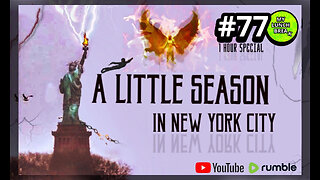Halloween: Origins, Traditions, and Modern Celebrations
Halloween: Origins, Traditions, and Modern Celebrations
Halloween, celebrated annually on October 31st, is a beloved holiday known for its spooky atmosphere, creative costumes, and sweet treats. Originating from ancient Celtic traditions, Halloween has evolved over the centuries into a vibrant and diverse celebration enjoyed by people of all ages around the world. This article delves into the rich history, enduring traditions, and modern interpretations of Halloween.
Ancient Roots
The roots of Halloween can be traced back to the ancient Celtic festival of Samhain, which marked the end of the harvest season and the beginning of winter. It was believed that on the night of October 31st, the boundary between the living and the dead was blurred, allowing spirits to roam the earth. To ward off malevolent ghosts, Celts would light bonfires and wear costumes made from animal heads and skins.
Christian Influence
As Christianity spread across Europe, the Church sought to incorporate pagan traditions into its own calendar. In the 8th century, Pope Gregory III designated November 1st as All Saints' Day, a day to honor all saints and martyrs. The evening before, known as All Hallows' Eve, eventually became Halloween.
Trick-or-Treating and Jack-o'-Lanterns
One of the most iconic Halloween traditions, trick-or-treating, has its origins in the medieval practice of "souling." On All Souls' Day, the poor would go door-to-door, offering prayers for the deceased in exchange for food. This evolved into the modern custom of children dressing up in costumes and going from house to house, collecting candy.
Jack-o'-lanterns, carved pumpkins with illuminated faces, have a fascinating origin as well. Legend has it that a man named Jack, who was notorious for his mischievous ways, tricked the devil and was denied entry to both heaven and hell. He was condemned to roam the earth with only a glowing ember inside a hollowed-out turnip to light his way. In Ireland and Scotland, people began carving scary faces into turnips and potatoes to ward off spirits. When Irish immigrants brought the tradition to America, pumpkins became the preferred canvas due to their abundance.
Modern Celebrations
Today, Halloween has evolved into a diverse and inclusive holiday celebrated in various ways across the globe. While the traditional customs of costume-wearing and trick-or-treating remain popular, many other activities have emerged. Haunted houses, spooky hayrides, and themed parties provide opportunities for people to revel in the eerie spirit of the season.
Additionally, Halloween has become a creative outlet for individuals and communities to showcase their artistic talents. Elaborate home decorations, intricate costumes, and pumpkin-carving contests have become integral parts of the festivities.
Cultural Significance
Halloween's cultural significance has expanded beyond its Celtic and Christian origins. It has become a time for people to express themselves, explore their creativity, and share in a sense of community. For many, it offers a chance to momentarily step outside of their everyday lives and embrace a playful, imaginative spirit.
Conclusion
Halloween, with its ancient roots and modern interpretations, stands as a testament to the enduring power of tradition and the human need for celebration. Whether it's through spooky stories, elaborate costumes, or ghoulish decorations, this holiday continues to bring joy and excitement to people of all ages around the world. So, as the nights grow longer and the air turns crisp, embrace the magic of Halloween and join in the festivities that have captivated generations for centuries.
#Halloween
-
 58:35
58:35
Crime Circus
22 hours agoMackenzie Shirilla KlDNAPPED!! True Crime Documentary!
24.1K10 -
 8:03
8:03
Bearing
19 hours agoE-Safety Karen INVENTS Elon Musk HARASSMENT While LEAKING Private Details!
28.9K76 -
 17:16
17:16
Clownfish TV
1 day agoMedia Melting Down Over Mainstream Media Meltdown...
52.7K61 -
 1:11
1:11
Gamazda
17 hours agoFlight of the Bumblebee - Rimsky-Korsakov
57.7K56 -
 1:00:21
1:00:21
MYLUNCHBREAK CHANNEL PAGE
18 hours agoA Little Season in New York City
66.8K71 -
 11:56
11:56
China Uncensored
20 hours agoThe Philippines Threaten War with China
60.9K46 -
 33:00
33:00
Degenerate Jay
1 day agoThe James Bond Games Have Been Lost To Time
33.3K8 -
 29:11
29:11
The Why Files
1 day agoMystery in Cisco Grove: Don Shrum’s Encounter with UFOs, Aliens and Robots
52.2K30 -
 2:26:44
2:26:44
Mally_Mouse
16 hours agoLet's Play -- Crowd Control Minecraft
52.6K5 -
 2:19:18
2:19:18
The Quartering
21 hours agoTrump Mistrial Bombshell, RNC Plans For Trump In Jail & Maybe Some Video Games
92.9K158